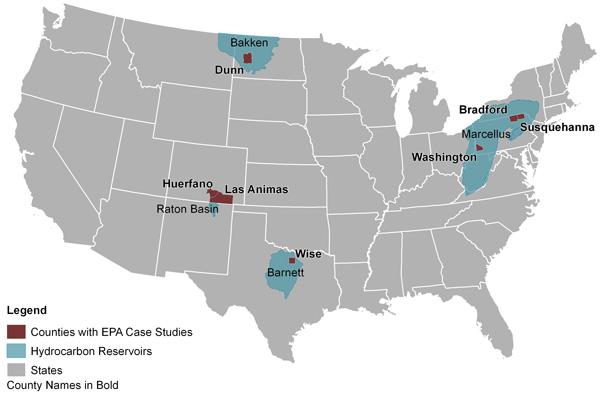Case Studies for EPA’s Hydraulic Fracturing Study
As part of our Study of the Potential Impacts of Hydraulic Fracturing for Oil and Gas on Drinking Water Resources, the EPA conducted five retrospective case studies.
Through these case studies, the EPA sought to identify whether there was an impact, and if so to better understand the potential causes of those impacts.
The case studies provide valuable insights into vulnerabilities and potential pathways for impacts to drinking water from hydraulic fracturing activities, such as; surface activities (including impoundment, well pads, and associated spills), and well construction and integrity. States worked cooperatively with the EPA on these case studies, and have independently taken steps to follow-up to protect water resources at all the case study locations.
Click on a highlighted location on the map for more information on each of the case study locations and copies of the case study reports.

